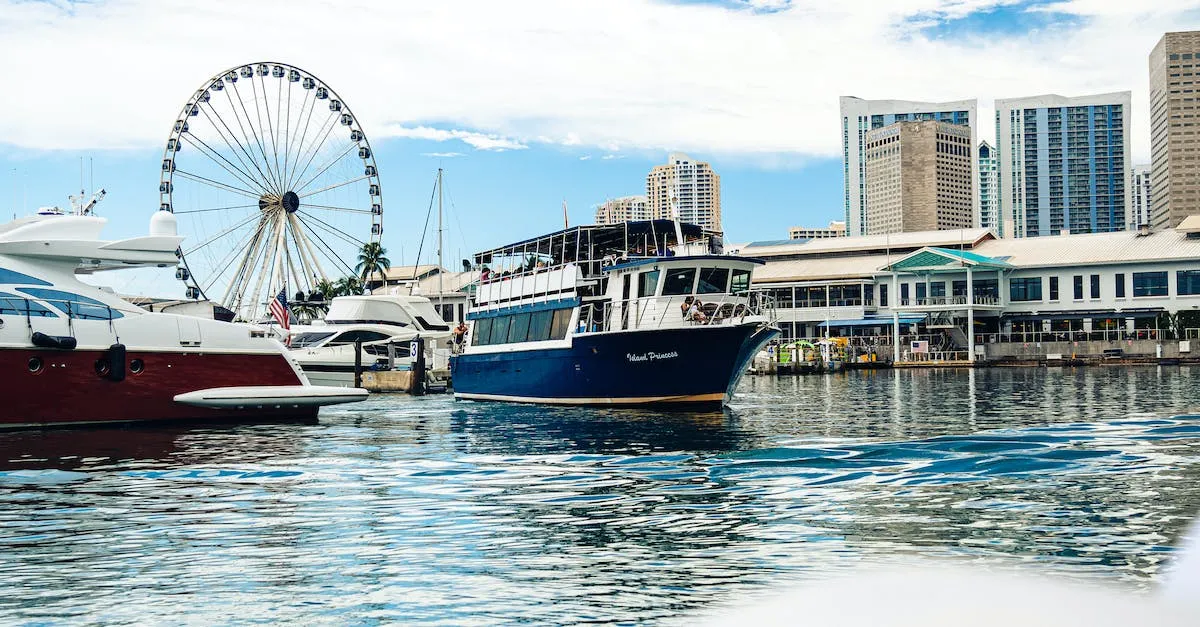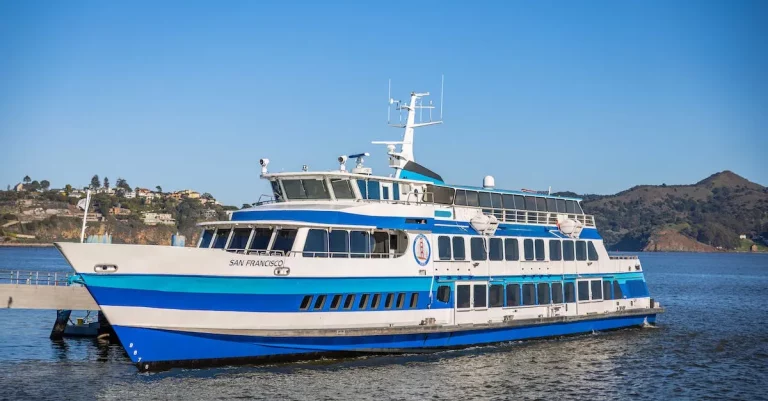Traveling From Florida To Puerto Rico By Boat: What You Need To Know
With its turquoise waters, colorful architecture and vibrant culture, Puerto Rico is an alluring Caribbean destination for travelers departing from Florida ports. But is it feasible to sail your own boat there from the Sunshine State?
If you’re short on time, here’s a quick answer: Yes, it’s certainly possible for properly equipped recreational boats to make the voyage from Florida to Puerto Rico.
In this approximately 3,000 word guide, we’ll cover key information including:
The Distance and Route from Florida
Map of the ideal course
When traveling from Florida to Puerto Rico by boat, it’s important to plan your route carefully. The ideal course typically involves sailing southeast from Florida, following the Atlantic Ocean. Along the way, you may pass through the Bahamas, which can add to the beauty and adventure of your journey.
While there are multiple routes you can take, it’s best to consult a nautical chart or use GPS navigation to ensure you stay on the right path. A map of the ideal course can help you visualize the journey and make necessary adjustments if needed.
Total nautical miles to San Juan
The total distance from Florida to San Juan, Puerto Rico, by boat is approximately 1,000 nautical miles. This distance may vary depending on the specific route you take and factors such as weather conditions and currents.
It’s important to be prepared for a multi-day journey and ensure you have enough fuel, supplies, and provisions to make the trip comfortably. Additionally, it’s recommended to have a thorough understanding of navigation techniques and safety protocols, as well as any regulations or requirements for entering Puerto Rican waters.
For more information on sailing distances and routes, you can visit www.nauticalcharts.noaa.gov, which provides detailed nautical charts and resources for planning your journey.
Choosing the Right Boat for the Crossing
Vessel requirements and recommendations
When it comes to traveling from Florida to Puerto Rico by boat, choosing the right vessel is crucial for a safe and enjoyable journey. While there are various types of boats that can make the crossing, it is important to consider a few key factors.
Firstly, the size and type of boat you choose will depend on your experience and comfort level. If you are an experienced sailor, you may opt for a sailboat or a motor yacht. However, if you are a novice boater, it is recommended to choose a boat that is easier to handle, such as a powerboat or a trawler.
Additionally, it is important to consider the seaworthiness and stability of the boat. The waters between Florida and Puerto Rico can be unpredictable at times, so it is advisable to choose a boat that is designed for offshore cruising.
Look for boats that have a deep V-hull, which provides better stability and handling in rough seas.
Moreover, it is essential to ensure that the boat is equipped with the necessary navigation and communication systems. GPS, radar, and VHF radio are crucial for navigating safely and staying in touch with other boats and authorities.
Essential gear, safety equipment, and provisions
Before embarking on a journey from Florida to Puerto Rico, it is important to have the right gear, safety equipment, and provisions on board.
Firstly, make sure you have enough life jackets for everyone on board, as well as additional safety equipment such as flares, fire extinguishers, and a first aid kit. These items are essential for ensuring the safety of everyone on board in case of an emergency.
It is also recommended to have a reliable means of communication, such as a satellite phone or a personal locator beacon. In the event of an emergency, these devices can help you call for assistance and ensure that help is on the way.
Additionally, it is important to have an ample supply of food and water on board. Plan your provisions carefully, taking into consideration the duration of the journey and the number of people on board.
It is always better to have more than you think you will need, as unexpected delays or emergencies can occur.
Lastly, don’t forget to pack appropriate clothing and bedding for the journey. The weather conditions can change quickly at sea, so it is important to be prepared for both hot and cold weather. Pack lightweight, breathable clothing that can dry quickly, as well as warm layers and rain gear.
Timing Your Departure and the Duration
When planning a boat trip from Florida to Puerto Rico, it is important to consider the timing of your departure and the duration of your journey. Here are some key factors to keep in mind:
Best windows based on weather and conditions
It is crucial to choose the right time to set sail from Florida to Puerto Rico. The weather and sea conditions along the route can vary greatly depending on the season. It is recommended to consult reliable weather forecast websites, such as National Hurricane Center, to ensure you choose a window with favorable weather conditions.
Avoiding hurricane seasons and periods of rough seas will make your journey safer and more enjoyable.
Additionally, it is wise to consider the prevailing winds and currents. Sailors can take advantage of the trade winds, which generally blow from the east to the west. These winds can provide a helpful push for sailboats, making the journey more efficient and enjoyable.
Estimated duration for power boats vs. sailboats
The duration of your boat trip from Florida to Puerto Rico will depend on various factors, including the type of boat you are using. Power boats, with their greater speed and efficiency, can typically complete the journey in around two to three days, depending on the weather and sea conditions.
On the other hand, sailboats usually take longer to reach Puerto Rico. The duration can range from seven to ten days or even longer, depending on the wind conditions and the sailing route chosen. It is important to note that sailboats offer a unique experience, allowing you to enjoy the journey at a more leisurely pace and take in the stunning views along the way.
| Boat Type | Estimated Duration |
|---|---|
| Power Boats | 2 to 3 days |
| Sailboats | 7 to 10 days |
It is important to note that these durations are estimates and can be affected by various factors, such as weather conditions, boat speed, and the route taken. It is always recommended to plan for some extra time to account for unforeseen circumstances or delays.
Whether you choose a power boat or a sailboat, timing your departure and considering the duration of your journey will help ensure a smooth and enjoyable experience when traveling from Florida to Puerto Rico by boat.
Key Stops and Marinas Along the Route
Harbors in the Bahamas
Traveling from Florida to Puerto Rico by boat offers a unique opportunity to explore some of the stunning islands in the Bahamas. As you make your way through the crystal-clear waters, you’ll come across several key stops and marinas that are worth visiting.
One popular harbor along the route is Nassau, the capital city of the Bahamas. With its vibrant culture, beautiful beaches, and bustling markets, Nassau is a must-visit destination. The Nassau Yacht Haven is a well-equipped marina that offers a range of amenities for boaters, including fuel, provisions, and repair services.
Another notable harbor is Freeport, located on the island of Grand Bahama. This bustling port city offers a variety of attractions, including pristine beaches, shopping centers, and lively nightlife. The Lucaya Marina & Resort is a top choice for boaters, offering world-class facilities and easy access to the stunning Lucayan National Park.
For those looking to venture off the beaten path, the Exumas are a hidden gem. This chain of islands is known for its untouched beauty, with secluded coves, pristine beaches, and abundant marine life. Staniel Cay Yacht Club is a popular marina in the Exumas, offering a range of services and amenities for boaters.
Port options in Puerto Rico
Once you’ve explored the Bahamas, it’s time to head to Puerto Rico. There are several port options in Puerto Rico that can accommodate boaters traveling from Florida.
San Juan, the capital city of Puerto Rico, is a bustling port with a rich history and vibrant culture. The San Juan Bay Marina is a top choice for boaters, offering state-of-the-art facilities and easy access to the city’s attractions, including the historic Old San Juan.
If you prefer a more laid-back atmosphere, consider stopping at the Puerto del Rey Marina in Fajardo. This marina is one of the largest in the Caribbean and offers a range of amenities, including restaurants, a swimming pool, and a yacht club.
Another option is the Mayagüez Marina, located on the western coast of Puerto Rico. This marina is known for its friendly staff, well-maintained facilities, and stunning views of the surrounding coastline.
It’s important to note that each marina may have specific entry requirements and fees, so it’s recommended to check with the marina in advance. Additionally, be sure to familiarize yourself with the navigation regulations and customs procedures for traveling between the Bahamas and Puerto Rico.
For more information on marinas and boating in the Bahamas and Puerto Rico, visit www.bahamas.com/marinas and www.puertoricomarinas.com.
Preparing and Filing a Float Plan
When embarking on a boat trip from Florida to Puerto Rico, it is crucial to have a well-prepared and properly filed float plan. A float plan is a document that outlines your intended route, estimated time of arrival, and other important details.
It serves as a vital communication tool between you and the authorities, ensuring your safety and providing peace of mind for your loved ones back home.
Details to include in your float plan
Creating a comprehensive float plan is essential for a successful journey. It should include specific details about your boat, such as its description, registration number, and any distinctive features.
Additionally, include a thorough itinerary that outlines your planned departure time, stops along the way, and expected arrival time in Puerto Rico. Be sure to include the names and contact information of all passengers on board, as well as any emergency contacts who should be notified in case of an unforeseen event.
Lastly, note any special equipment or medical conditions that may be relevant.
Filing your plan with USCG and others
Once your float plan is complete, it is crucial to file it with the United States Coast Guard (USCG) and other relevant authorities. The USCG provides an online tool called the National Safe Boating Information Center where you can submit your float plan easily.
Additionally, you should share a copy of your float plan with a trusted friend or family member who is not on the trip. This person can be responsible for initiating search and rescue efforts if necessary and can provide updates to the authorities.
It is important to note that a float plan is not a guarantee of safety, but rather a proactive measure to enhance your overall safety while traveling. It is essential to regularly update your float plan with any changes to your itinerary or contact information.
By taking the time to prepare and file a float plan, you are taking a responsible and proactive approach to ensure a safe and enjoyable journey from Florida to Puerto Rico.
Conclusion
With thoughtful planning and preparation, a rewarding voyage from Florida to Puerto Rico is an achievable cruise for many captains and their crews. While this Atlantic crossing requires careful timing and a seaworthy vessel, island hopping through the Bahamas en route adds cultural allure. If you equip yourself with the knowledge of winds, waterways and regulations, smooth sailing awaits.
¡Buena suerte! With a well-crafted float plan and prudent seamanship, you’ll be relaxing on a Puerto Rican beach before you know it.








